A Gold mine is a place where gold is dug from the ground. Something that produces something desired (such as money). Gold mines remain important hubs of industry around the world as prospectors gamble on striking it rich with one of the world’s most valuable metals. Demand remains high for the precious metal, particularly in jewellery-making and as a relatively safe investment opportunity. Gold often occurs in free elemental form in rocks, veins and alluvial deposits in the form of nuggets or grains. A mine is a source of great wealth or profit. According to Mining Technology, Here are the 10 Biggest Gold Mines by reserves in the world in the year 2020.
1.Carlin, USA. 411 koz.
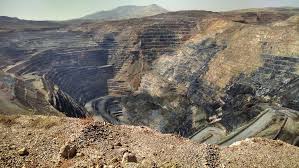
The Carlin Trend hosts one of the largest gold concentrations in the western hemisphere. Total Carlin’s production is 4% of world Production. Carlin deposits are 75% of US production. It has good hunting grounds for big deposits. On July 1, 2019, Barrick’s Goldstrike (including 60% share of South Arturo) and Newmont’s Carlin were contributed to Nevada Gold Mines and are now referred to as Carlin. This gigantic integrated operation located west of the city of Elko on the geologic feature known as the Carlin Trend, Stretching 56km (35mi). Nature concentrates the metals by a process of partially melting Crustal rocks at the depth, letting them melt arise through the crust and on the way cool and dumping valueless minerals such as Feldspars and amphiboles and then concentrating the useful minerals and metals in the remaining magma or hydrothermal fluid. Carlin–type gold deposits are sediment-hosted disseminated gold deposits. These deposits are characterized by invisible gold in pyrite and arsenopyrite. This dissolved kind of gold is called “Invisible Gold”, as it can only be found through chemical analysis.
- Olimpiada. 277 koz.
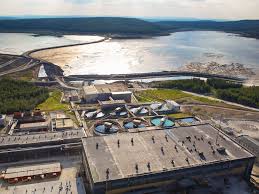
Located in one of Russia’s most prolific gold mining provinces, Olimpiada is largest gold mine in Russia, one of the largest gold mines on the globe. It is operated by Polyus. Olimpiada is Polyus’ largest gold operation and accounts for almost half of its total gold production. The company’s Olimpiada and Blagodatnoye mines are part of its Krasnoyarsk business unit, which is the second-largest gold asset in the world by output. The combined production from the two operations represents 63.7% of the company’s total gold output. This ore mined at the site is processed at three plants with a combined capacity of 13 million tonnes of ore annually. Olimpiada is located in the Severo-Yeniseysky District, 25km away from the village of Yeruda. The site is approximately 500km from the city of Krasnoyarsk in the Krasnoyarsk Territory of Western Siberia. It is situated at a distance of 20km from Blagodatnoye mine. Polyus Gold has claimed the Olimpiada gold mine is estimated to contain proven and probable reserves of around 28 million ounces. The mine produced 1.38Moz of gold in 2019 and 1.32Moz of gold in 2018.
- Pueblo Viejo, Dominican Republic. 238 koz.
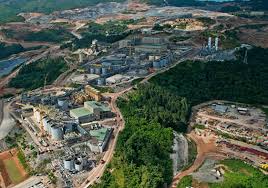
The Pueblo Viejo mine is a gold mine located in the north-central region of the Dominican Republic in the Sanchez Ramirez Province. It is the largest gold mine in the Americas and eighth largest in the world. This mine produced 581,000 ounces of gold in 2018 and 6.55 million ounces of gold in reserve. The mine comprises two major oxide deposits known as Monte Negro and Moore and three other small deposits. The Pueblo Viejo mine in the Dominican Republic is about 100 km northwest of the capital city of Santo Domingo. The mine is operated by the Pueblo Viejo Dominicana Corporation — a joint venture between Barrick (60%) and Newmont (40%). Pueblo Viejo has a mine-life of more than 30 years and is expected to produce over one million ounces of gold per annum. It is the largest undeveloped gold mine in the world.
- Cortez, USA. 208 koz.
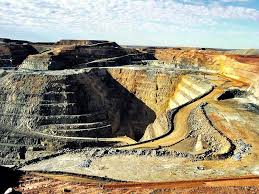
Cortez Gold Mine is a large gold mining and processing facility in Lander and Eureka County, Nevada, United States, located approximately 75 miles (120 km) southwest of Elko and comprises the Pipeline and South Pipeline deposits and the Cortez Hills deposit. Pipeline and South Pipeline are open pit mines, while Cortez Hills is an underground and open pit mining operation. On July 1, 2019, Cortez was contributed to Nevada Gold Mines, a joint venture between Barrick and Newmont Corporation. It consists of three distinct units: the Cortez open pit and two Carlin-type disseminated gold deposits – Pipeline and South Pipeline. The entire Pipeline complex contained 23 million ounces of gold between the original orebodies, the Pipeline orebody and the later discoveries of South Pipeline, Crossroads and Gap. It will also retain a contingent royalty interest in the future production of the property.
- Kibali, DRC. 202 Koz.
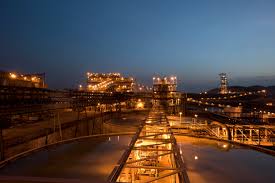
The Kibali gold mine is located in the northeast of the Democratic Republic of Congo (DRC), approximately 220 kilometres east of the capital of the Haut Uele province, Isiro, 150 kilometres west of the Ugandan border town of Arua and 1,800 kilometres from the Kenyan port of Mombasa. It is expected to produce 600,000oz of gold per annum for the first 12 years. The Kibali gold mine is located within the Moto greenstone belt. The gold mineralisation is scattered throughout the region. Kibali is co-owned by AngloGold Ashanti (45%), Barrick Gold Corporation (45%) following its merger with Randgold Resources, and Société Minière de Kilo-Moto (SOKIMO) (10%), a state-owned gold mining company. Kibali produced 807,000 ounces of gold in 2018. It comprises an integrated open pit and an underground operation as well as a 7.2Mtpa processing plant. The mine is named for the nearby Kibali River. There are two zones: Kibali-Durba-Karagba trends north-east, and Pakaka-Mengu trends north-west. Gold-bearing deposits are found throughout the region. Facilities include a sulphide and oxide plant that can process 7.2 million tonnes of ore per year, three 44MW hydroelectric stations, a 32MW backup thermal power generator and separate storage facilities for cyanide and flotation tailings.
6.Cadia East, Australia. 195 koz.
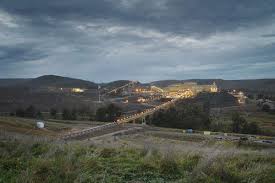
Cadia produces gold doré from a gravity circuit and gold-rich copper concentrates from a flotation circuit at Cadia. The gold dore is then refined at the Perth Mint and concentrates are piped to a dewatering plant at nearby Blayney and sent by rail to Port Kembla in New South Wales for export. The Molybdenum Plant is expected to deliver an additional revenue stream in the form of a molybdenum concentrate which will be a by-product credit to AISC per ounce. Newcrest’s Cadia is made up of the Cadia East underground panel cave mine and the Ridgeway underground mine (currently in care and maintenance). Cadia East mine in the Cadia valley produced 752,000 ounces of gold in 2018.
Cadia East is the biggest gold mine in Australia despite 11% production decline in March Quarter 2020. The Cadia East orebody is one of the world’s largest gold deposits, comprising a Mineral Resource of 2,347Mt containing 33.2Moz of gold and 6.59Mt of copper, along with a current Ore Reserve of 18.7Moz of gold and 3.16Mt of copper. It will underpin production from the Cadia Valley for at least the next 30 years. Initial exploration pointed to an underground mine similar to Ridgeway Deeps, however, more recent drilling has revealed that a much larger zone of mineralisation exists, likely to support both underground and open cut mines.
- Lihir, PNG. 187 koz.
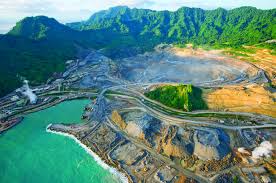
Newcrest’s Lihir operation on Aniolam Island in the New Ireland Province of Papua New Guinea is 900 kilometres north-east of the capital Port Moresby. The gold deposit at Lihir is within the Luise Caldera, an extinct volcanic crater that is geothermally active.
The Lihir mine produced 976,000 ounces of gold in 2018, a 6% improvement over 2017. Most of the ore extracted from Lihir is treated through pressure oxidation and conventional leaching. The mine produced 933,000oz of gold in the financial year ending June 2019. The mine is expected to produce 1Moz of gold in 2020. Lihir is looking to stabilise throughput at or slightly above these levels and increase focus on lifting recovery rates to maximise overall gold production and cash flow in the future. It employs approximately 4,500 residential and fly-in-fly-out workers.
- Loulo-Gounkoto, Mali. 176 koz.
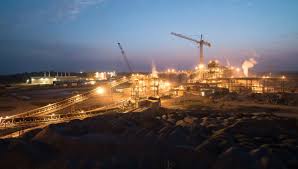
Barrick’s Loulo-Gounkoto complex comprises two distinct mining permits, Loulo and Gounkoto, and is situated in western Mali, bordering Senegal and adjacent to the Falémé River. Barrick Gold Corporation’s Loulo-Gounkoto complex has demonstrated its mettle, exceeding its 2019 guidance with production of 714,802 ounces of gold. An intensive exploration program in the Kenieba region, Loulo-Gounkoto has significant growth potential and is well-placed to meet all the targets. Société des Mines de Loulo SA (Loulo) owns the Loulo gold mine, and Société des Mines de Gounkoto (Gounkoto) owns the Gounkoto gold mine. Both Loulo and Gounkoto are owned by Barrick (80%), and the State of Mali (20%). This is also the product of a long and constructive partnership between the government of Mali and ourselves, and in this regard it is gratifying to report that we have made significant progress towards settling the dispute between us over tax and related issues which allows us to look forward to continuing to grow our partnership with the Mali government and its people
- Fekola, Mali. 164 koz.
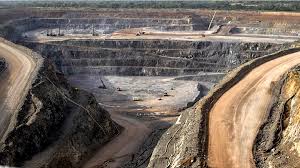
The Fekola Mine is located in southwest Mali, on the border between Mali and Senegal, approximately 500 km due west of the capital city, Bamako. B2Gold acquired the world-class Fekola Gold Project through a merger with Papillon Resources Limited in October 2014. The Fekola Mine generated almost US$134 million in revenue for the Government of Mali in 2019. B2Gold will continue to monitor the situation and work to ensure that its mining operations continue normally, providing economic benefits and job creation both to the communities around the mine and to regional and national governments. Foreign investment and political stability in Mali are crucial for the country. B2Gold is a low-cost international senior gold producer headquartered in Vancouver, Canada. Founded in 2007, today, B2Gold has operating gold mines in Mali, Namibia and the Philippines, and numerous exploration and development projects in various countries including Mali and Colombia. In 2020, B2Gold forecasts consolidated gold production of between 1,000,000 and 1,055,000 ounces.
- Fosterville, Australia. 160 koz.
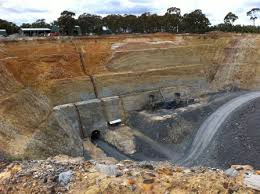
Kirkland Lake’s Fosterville Mine is second highest-grade and one of the lowest-cost gold mine globally, located 20km from the city of Bendigo in the State of Victoria, Australia. The Fosterville Mine features growing gold production at increasingly high grades, as well as extensive in-mine and district scale exploration potential. In March Quarter 2020, Kirkland Lake achieved 25% y-o-y production growth at Fosterville. In particular, the Swan Zone contributed 532,000 ounces at an average grade of 58.8 g/t Au (281,000 tonnes) to the updated Mineral Reserve estimate. The mine is located in an area with well-developed infrastructure and is accessible by paved roads. Fosterville’s ore is processed at the Fosterville Mill, a 2,275 tonne per day processing facility.
